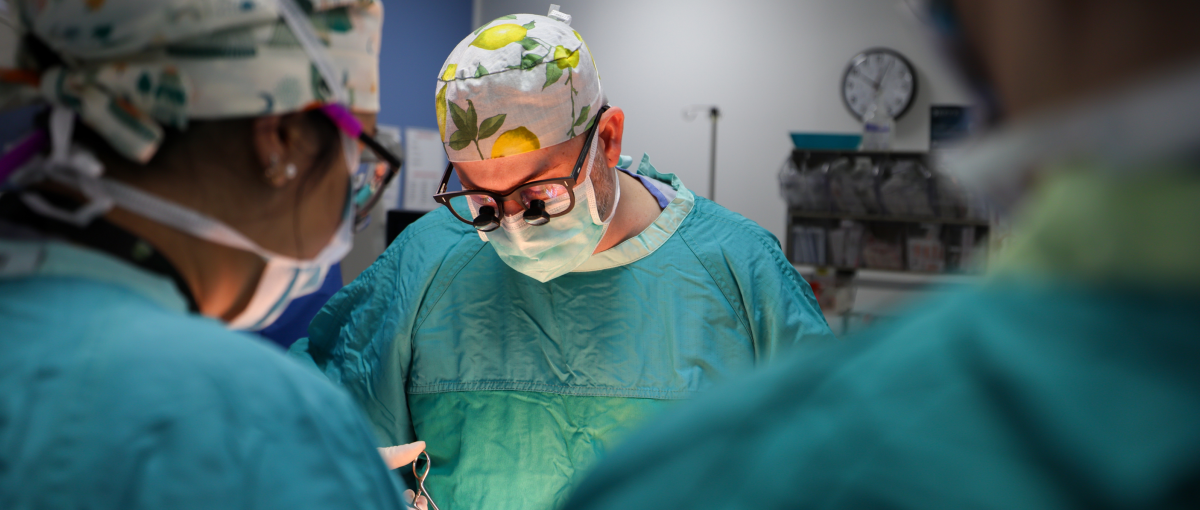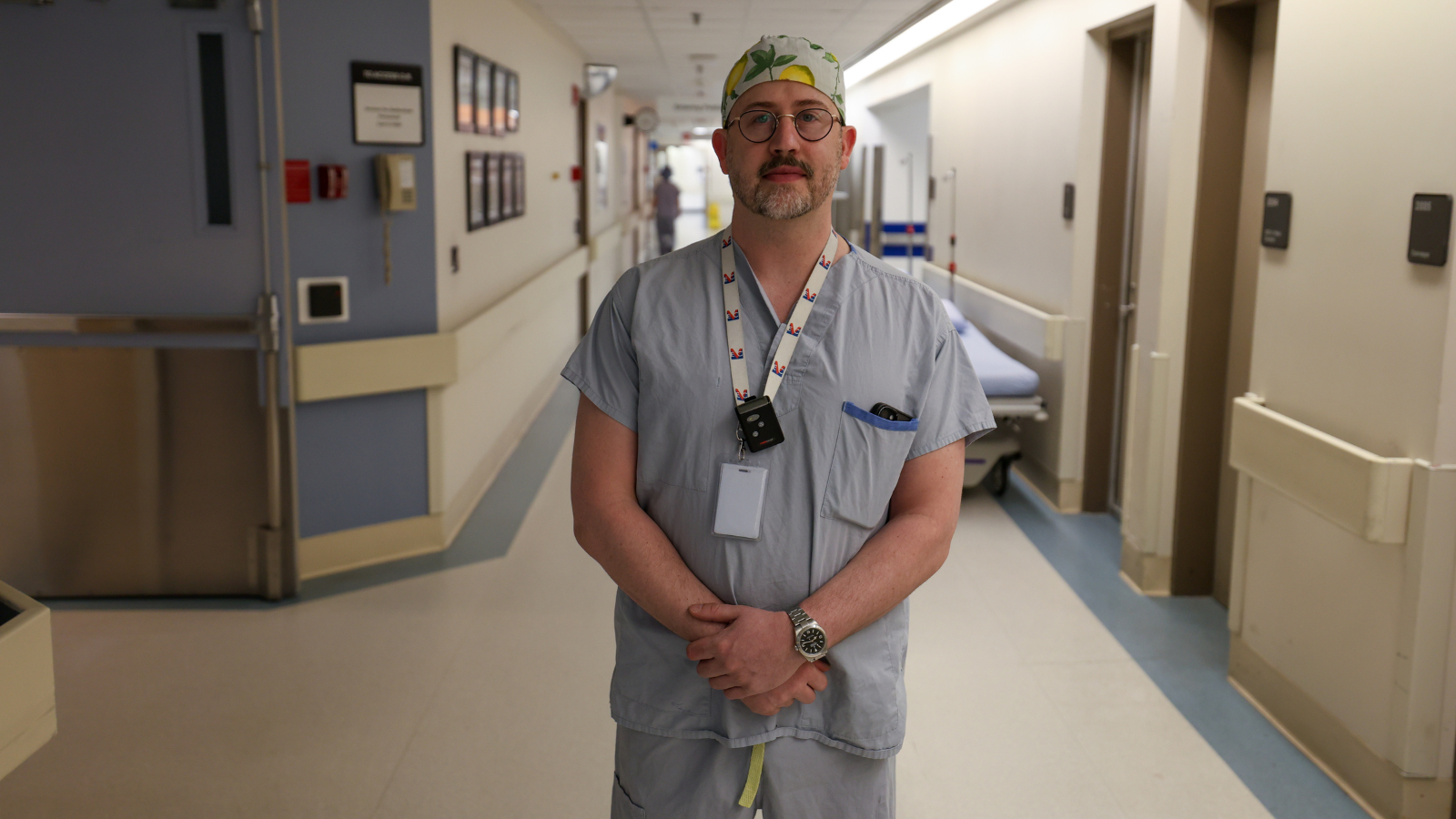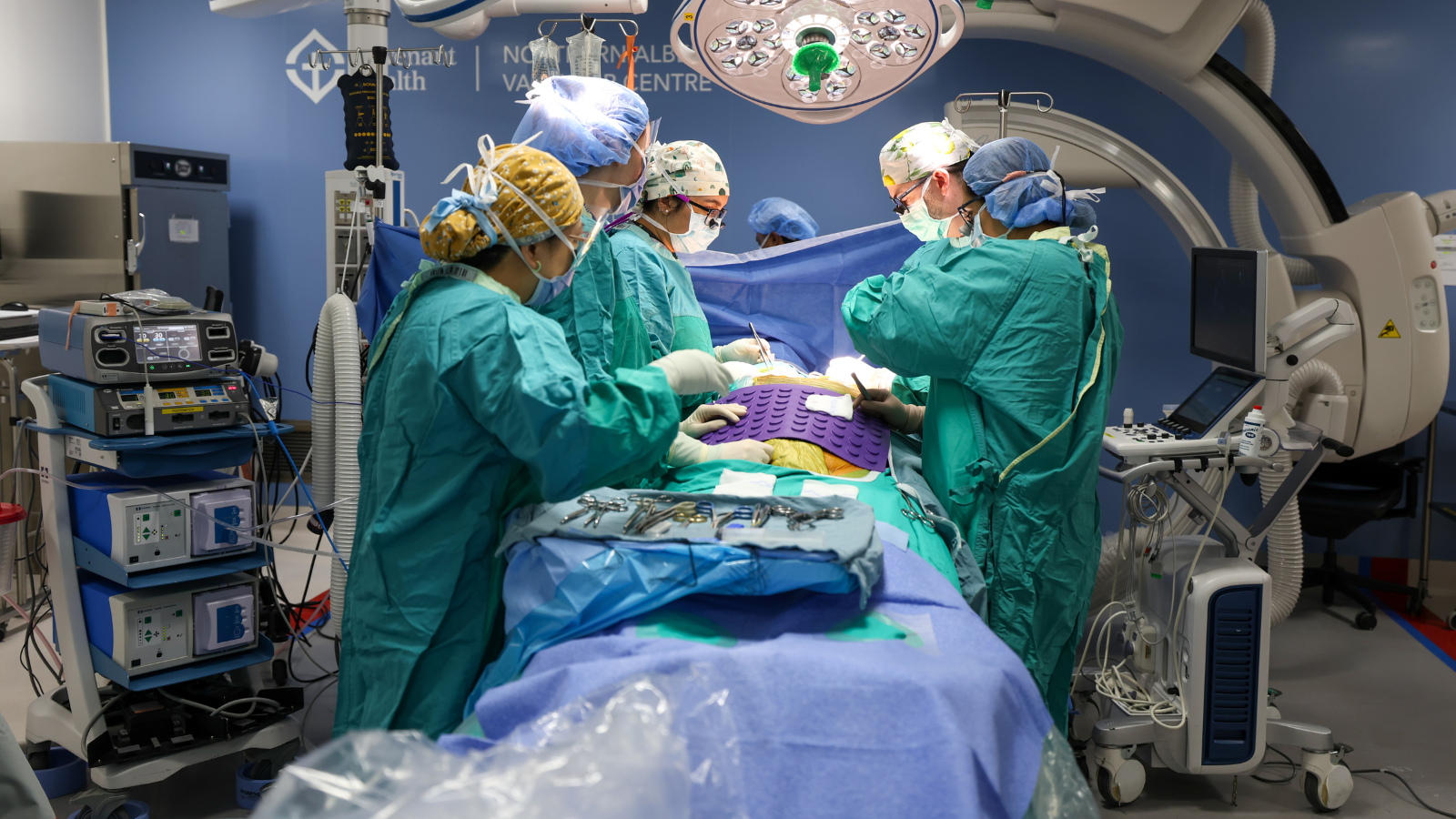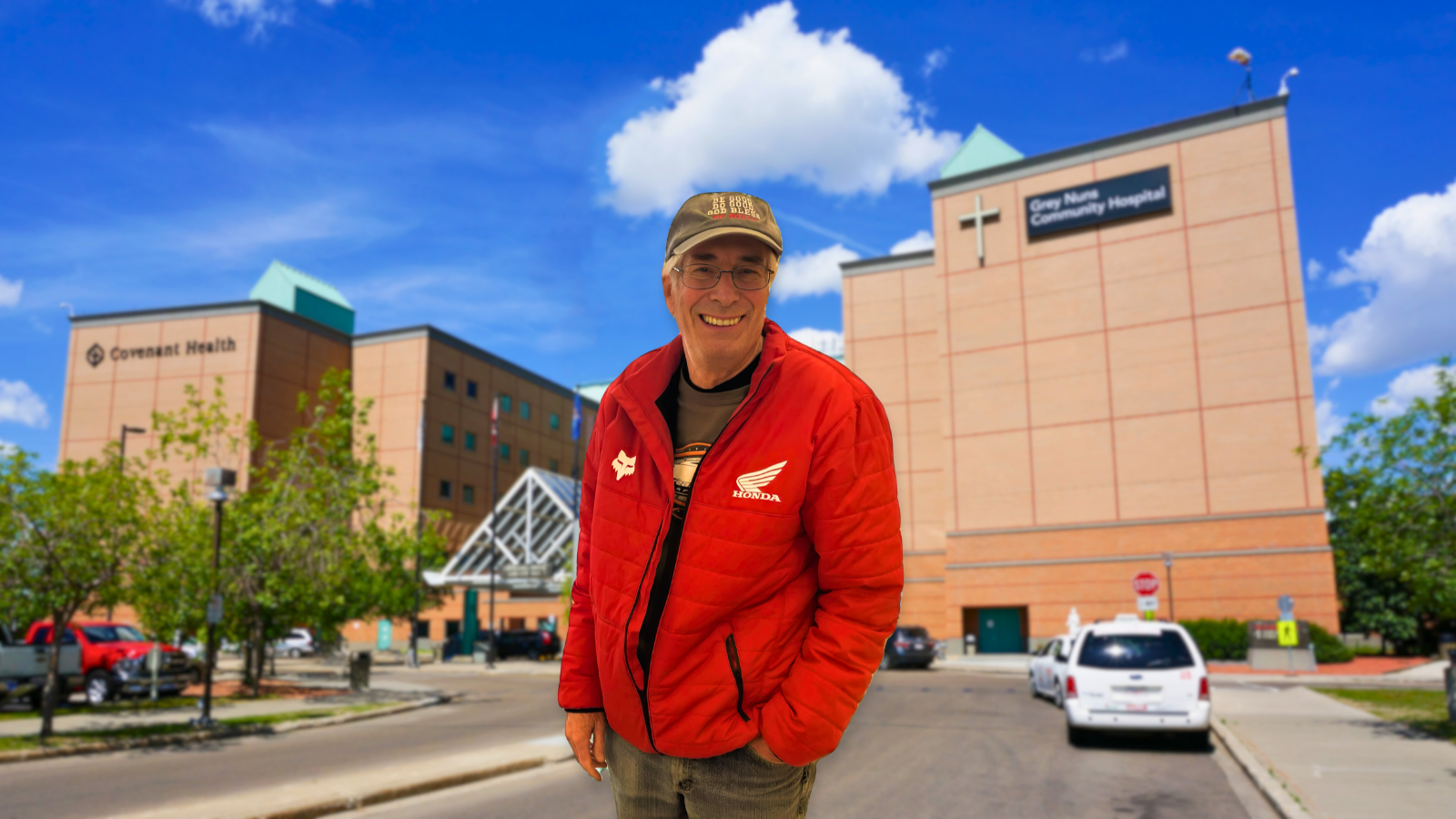Aortic surgery gives patients at the Grey Nuns Community Hospital a second chance at life

April 25, 2025
By Peter Rybar, social media advisor
The only sign something was wrong was a sudden nosebleed. Then another, followed by a blackout.
For Mike McKeown, that seemingly minor scare turned out to be the first step in a life-saving journey with the vascular program at the Grey Nuns Community Hospital in Edmonton.
“I had no symptoms,” says Mike, a 74-year-old St. Albert resident. “But they did a scan at the hospital and said, ‘You’ve got two aneurysms.’ That’s when the whole process started.”
Mike is one of a growing number of Albertans whose lives have been transformed by an innovative complex aorta surgery now available at the Grey Nuns hospital. The complex aorta, which is the body’s main artery, can be damaged or weakened by aneurysms or tears that are life-threatening and difficult to treat. The Grey Nuns vascular program now offers both traditional open surgery and minimally invasive endovascular approaches (through the blood vessels) to repair or replace portions of the aorta, depending on the patient’s condition.
Until recently, patients with severe aortic conditions like Mike’s had few, if any, options. The hospital’s vascular program previously had a much narrower scope, which meant this type of surgery could not be offered to many patients. In fact, very few of these procedures were being done anywhere in Alberta. Some patients had to leave the province for treatment, while others received no surgery at all. This was especially concerning since these conditions carry a high risk of death if left untreated.
That has changed thanks to Dr. Matthew Cwinn, a vascular surgeon whose expertise and vision are shaping a new chapter in surgical care in the region. He was recruited to the Grey Nuns specifically to expand the vascular program, having completed advanced fellowship training in the Netherlands, one of Europe’s leading aortic centres, before launching the complex aorta surgery program in Edmonton.

Dr. Matthew Cwinn
“Before, we might have seen three or four of these cases a year,” Matthew says. “Now, we’re doing that many in a month. It’s a full program with a multidisciplinary team and high surgical volume. That’s what ensures we get good outcomes.”
These surgeries are no small feat. Each case is custom planned using detailed imaging, and some involve inserting up to 14 different stents. The minimally invasive approaches result in less damage to the body, including less pain, less blood loss and fewer complications for patients, says Matthew.
“This kind of surgery used to mean opening someone from the chest to the belly. Now, we can reconstruct their entire aorta through two tiny groin incisions. It’s incredible.”
That innovation also means a drastically improved recovery. Mike underwent two procedures staged over two months, involving a total of eleven devices. He was back home within days of each surgery.
“The first time, I was in at 6 a.m. and out by 4 p.m.,” he says. “The second (surgery) was bigger, but even then, I was home in four days. I had some aches and a sore back but no real complications.”
The program’s success is rooted in collaboration. Every patient’s case is reviewed by a roundtable of surgeons, cardiologists, anesthesiologists and intensive care unit staff. The team includes a small, highly trained group of nurses and physicians who manage everything from pre-op planning to intensive post-op monitoring.
“You can’t do this kind of surgery in isolation,” says Matthew. “It’s not about one person. It’s about the entire team being on the same page, from start to finish.”

Dr. Matthew Cwinn and his team performing a complex aorta surgery
For Mike, the result was not just a successful surgery but a return to life.
“I’m back on my Goldwing this summer,” he says, referring to his motorcycle. “When I asked Dr. Cwinn if I could ride again, he said, ‘You probably shouldn’t, but not because of the surgery, just because motorcycles are dangerous!’”
Mike’s diagnosis may have saved more than one life. While visiting his twin brother in Ontario not long after discovering his aneurysms, he asked to check his blood pressure and was surprised to learn that his brother did not even own a monitor.
“I said, ‘You guys are crazy. You need to get one of these,’” Mike recalls.
That conversation led his brother to visit a doctor who diagnosed him with high blood pressure and a small aneurysm of his own.
“He had no idea,” Mike says. “If I hadn’t gone through this, I don’t think he would have ever been checked.”
The two brothers, who share identical genetics, now share something else: a renewed sense of vigilance. “It’s pretty scary when you think about it. One nosebleed and four years later, I’ve had surgery that saved my life, and my brother is getting the help he needs too.”

Mike McKeown, 74
The most important outcome was peace of mind, Mike says. “Before, they told me I could die if this thing burst. Now, it’s fixed. I’m living my life.”
That’s exactly what makes the work so meaningful for Matthew.
“What’s most rewarding is seeing patients come back after surgery and knowing they’ve gotten their lives back,” he says. “Many of them were afraid to travel or even leave their city because of the risk. Now, they’re planning trips, living without fear. That part never gets old.”
But for Matthew, it’s not just the outcome that matters; it’s also the challenge. Each case is different, often requiring hours of careful planning, intricate imaging review and custom solutions.
“These are some of the most complex surgeries we can offer,” he says. “Technically, they’re demanding, and they keep you sharp. I get a lot of satisfaction out of trying to be the best that I can be and pushing things forward for Albertans.”